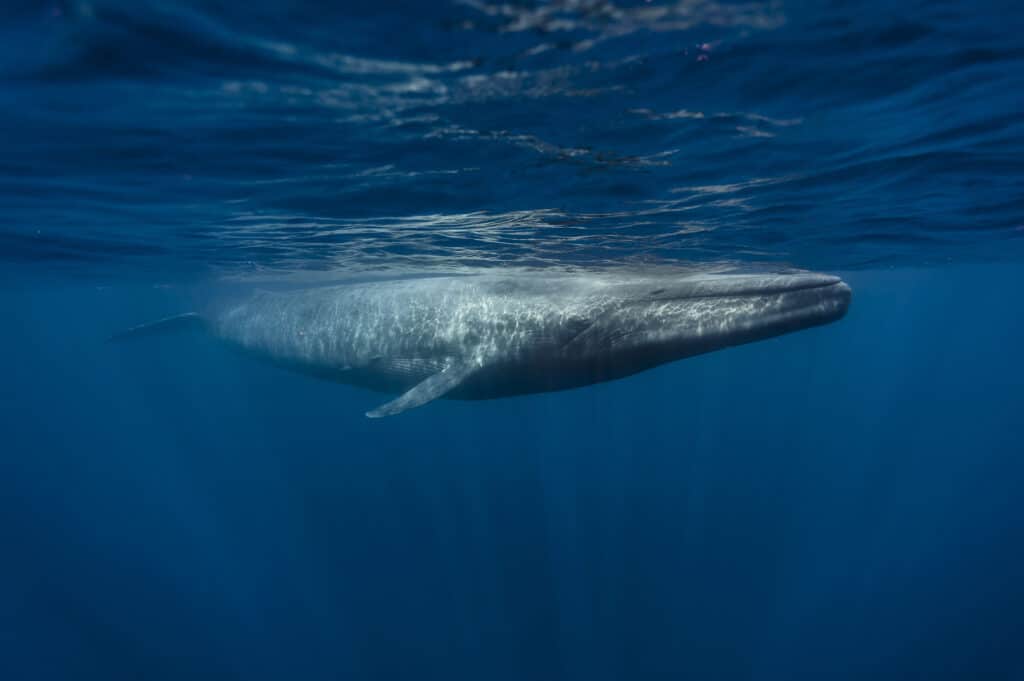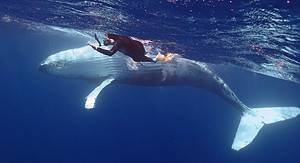In this video, dock onlookers are given a spectacular view and a chance to learn more about whales’ behavior. Although the playback speed in the video was altered, you can still hear the whale’s wail, which sounded like a long, high-pitched howl, almost playful.
Check Out the Footage Below
The blue whale approaches the dock and immediately turns in the opposite direction by banking its head to the side. As the blue whale tries to swim away, a young lady watching dangerously close reaches out her hand and tries to touch the whale’s head, then the tail.
The blue whale swims away, leaving the onlookers and the young lady unharmed. Was the young lady lucky that she was left safe? Fortunately, blue whales are non-violent creatures. They are not aggressive toward humans or other marine animals when they aren’t threatened.
A blue whale sighting is extremely rare, especially when you’re on a dock. Blue whales commonly swim in deep seas and oceans. They also migrate between tropical and polar waters depending on the season.
Blue whales have interesting behaviors, especially when they leave the deep ocean and emerge to the surface. Breaching happens when the whale launches itself up, and its body completely leaves the water, almost as if it is jumping out of the water. Whales may spyhop close to shore to see where they are and check some landmarks to decide which direction they should take. Whales may also spyhop out of curiosity, especially when they are trying to investigate boats nearby.
Why Do Whales Come Close to Shore?

Blue whales can swim near the shore when a predator is nearby.
©Andrew Sutton/Shutterstock.com
There are many reasons why whales come closer to the shore. Unfortunately, some heartbreaking reasons could be that they have an injury, are sick, or are just lost. Whales also prefer to stay in oxygenated waters, so another possible reason why whales come close to shore is because of pollution. The water near the shore is more oxygenated than in the ocean’s deep waters.
Poachers and killer whales are the primary enemies of blue whales. Blue whales also swim near the shore when a predator is nearby. However, other human activities in the ocean that require the use of sound waves under the water’s surface may also drive whales near the shore. The sound waves from human equipment cause disorientation and confusion to all our lovely Cetacean friends.
The photo featured at the top of this post is © NOAA Photo Library / CC BY 2.0, Flickr – License / Original
Thank you for reading! Have some feedback for us? Contact the AZ Animals editorial team.






